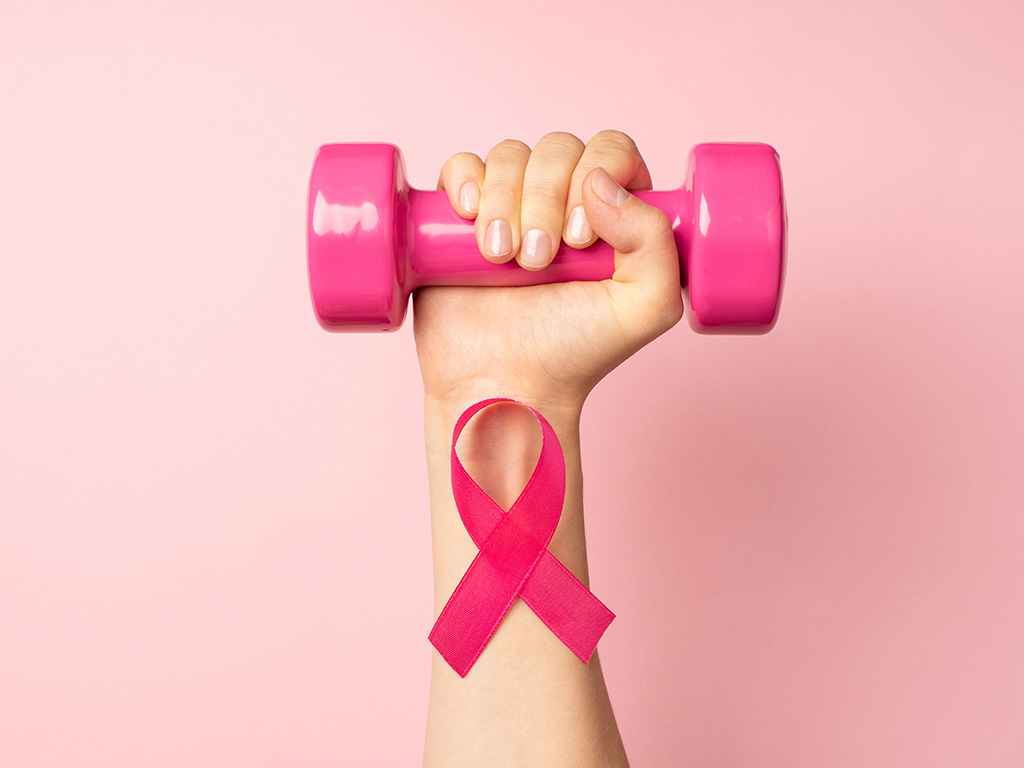Muscle mystery: Running, walking or moving around can release ‘factors’ that slow growth of breast cancer

While it is generally accepted that exercise can benefit a person’s overall health, a recently published paper has found a direct link between muscle contraction and a reduction in breast cancer.
In the paper, published in the journal Frontiers in Physiology, a team of Texas A&M researchers concludes that a currently unspecified factor released during exercise suppresses signaling within breast cancer cells, which reduces tumor growth and can even kill the cancerous cells.
“For this study, we took a deeper look into the relationship between people who exercise more and have less of a risk of cancer; previously, it was believed that there wasn’t anything mechanistically linked. Rather, it was just the general benefits seen in your body because of a healthy lifestyle.” said Amanda Davis, first author on the paper and a clinical assistant professor at the Texas A&M School of Veterinary Medicine & Biomedical Sciences. “These data are exciting because they show that during muscle contraction, the muscle is actually releasing some factors that kill, or at least decrease the growth of, neoplastic (abnormal, often cancerous) cells.”
The researchers also found that the factors inherently reside in muscle and are released into the bloodstream no matter what a person’s usual activity level is or how developed their muscles are.
“Our results suggest that whether you consistently exercise or you just get up and walk when you’re not used to working out, these factors are still being released from the muscle,” Davis said. “Even simple forms of muscle contraction, whether it be going on a walk or getting up to dance to your favorite song, may play a role in fighting breast cancer.
“The big message is to get up and move,” she continued. “You don’t have to be an Olympic-level athlete for these beneficial effects to occur during muscle contraction; being physically fit doesn’t make you more likely to release this substance.”
To measure the level of factors released by exercised muscle, Davis trained rats to complete a moderate intensity exercise program consistent with the American College of Sports Medicine’s recommendations for people.
“They ran on treadmills for five weeks and we gradually increased the incline,” she said.
Although Davis’ team could not identify an exact minimum muscle contraction time necessary for the effect, they did note that the longer the contraction session lasted, the more factors were released.
Based upon the study results, her general advice for promoting the release of the factors is to follow the protocols recommended by the American College of Sports Medicine—namely, 30 minutes a day of moderate intensity exercise for at least five days a week. This could include brisk walking, dancing, or biking, according to the American Heart Association.
Regular exercise could not only lead to disrupted communication in the cancerous cells to stop their growth, but the factors released by exercise may also play a role in preventing breast cancer’s development in the first place.
“The decreased risk of breast cancer with exercise comes from the idea that if you have pre-neoplastic cells and you’re exercising a lot and slowing their growth, maybe those precancerous cells can be destroyed by the body before they start taking over,” Davis said.

